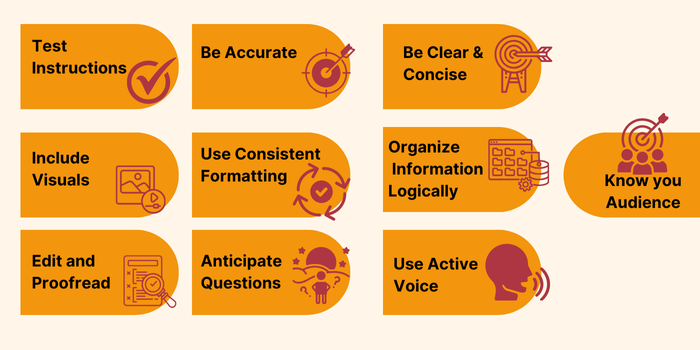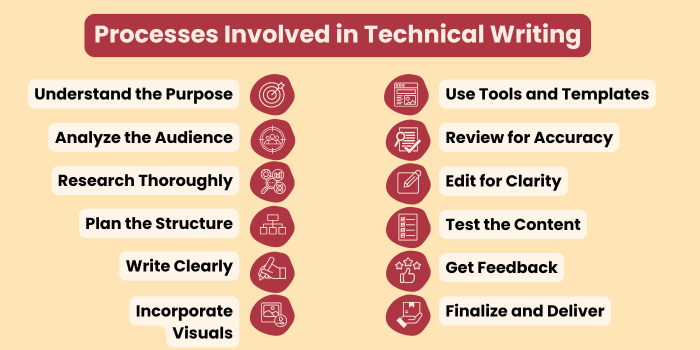

Every day, businesses lose valuable time, money, and customers because of unclear instruction manuals, confusing product guides, and hard-to-follow procedures. Poor communication costs U.S. businesses about $2 trillion annually, with roughly $15,000 lost per employee due to misunderstandings and unclear directives.
For technical roles, where complex information is common, this highlights the importance of clear documentation in reducing these costs. Employees struggle to understand new software, customers get frustrated with product instructions, and companies face serious problems when safety guidelines aren't clear.
The root cause? Poor technical writing that fails to explain complex information in simple terms.
In this blog, you will learn about the proven methods that turn confusing information into crystal-clear instructions. These methods help businesses save money, time, and reputation while keeping everyone safe and productive.
Let’s begin by exploring the meaning of technical writing.

Technical writing is a form of communication that explains complex information in a clear, concise, and easily understandable way. It is widely used in industries like technology, engineering, healthcare, and software development to create documents that help people understand and use products or services effectively.
Examples of technical writing include user manuals, instruction guides, software documentation, project reports, and training materials. The main goal of technical writing is to bridge the gap between technical experts and non-experts by presenting information in a way that is accessible to everyone.
A good technical writer focuses on the needs of the audience. They simplify jargon, organize content logically, and use visuals like diagrams or charts to make the information easier to grasp. For example, instead of saying "initialize the device," they might write "turn on the device by pressing the power button."
Technical writing is essential because it helps users solve problems, follow instructions, and understand technical concepts. It requires clear communication, attention to detail, and the ability to research complex topics. Whether explaining how to use a new app or writing safety guidelines for machinery, technical writing plays a key role in making information accessible.

Now that we know what technical writing is, let’s explore the common types involved in it:
User manuals guide end-users on how to operate a product or service. They include step-by-step instructions, troubleshooting tips, and safety warnings. For example, user manuals for household appliances explain features, settings, and maintenance procedures.
Instructional guides focus on teaching users how to complete specific tasks. These documents are often used for training or educational purposes, such as learning how to configure software or assemble furniture. They include clear steps, visuals, and FAQs for better understanding.
Software documentation is written for developers or end-users to understand and use software applications. Examples include API documentation, release notes, and installation guides. It explains the software’s features, technical requirements, and integration processes.
Technical reports present research, analysis, or project progress in a structured format. These documents are common in engineering, IT, and scientific fields. They include data, charts, and conclusions to help stakeholders make informed decisions.
These documents outline organizational rules and operational workflows. Policies ensure compliance with legal or industry standards, while procedures detail how to perform routine tasks. Examples include workplace safety manuals or HR guidelines.
White papers explain complex concepts, products, or solutions to inform decision-makers. They are often used in marketing to demonstrate expertise and provide detailed insights into a specific problem or technology.
Proposals outline plans, ideas, or projects seeking approval. They include objectives, timelines, and cost estimates. Examples range from business proposals for funding to project bids in engineering or construction.
Training materials provide structured information for onboarding or skill development. Examples include slide decks, e-learning modules, and reference booklets that guide learners through specific subjects or processes.
Here are some practical tips to help you excel in technical writing:


Technical writing is a structured process that involves creating clear, concise, and user-friendly documents to explain complex information. Whether you’re developing a user manual, instructional guide, or software documentation, following a systematic approach ensures accuracy, clarity, and effectiveness.
Below are the key processes involved in technical writing to help you create impactful documents.
Writing tools streamline the documentation process. Modern software helps writers create consistent, well-structured documents while effectively managing complex projects.
These tools often include features for collaboration, version control, and multi-format publishing.

Technical writers need various skills to succeed. Understanding technical concepts, industry terminology, and documentation tools forms the foundation.
Here are some of the must-have skills a technical writer should possess:
Ability to convey complex information in simple and effective language, with a strong grasp of grammar and styles, including AP, MLA, and other guidelines.
Proficiency in information gathering through interviews, reviewing documents, and using reliable sources. Technical understanding and analysis of problems to create content that addresses users' pain points.
Familiarity with tools such as Microsoft Word, Adobe FrameMaker, MadCap Flare, and Confluence. Knowledge of CMS platforms, version control systems like Git, and a basic understanding of coding (e.g., HTML, XML, Markdown).
Time management skills to meet deadlines and handle multiple tasks. Collaborative skills to work with developers, designers, and stakeholders to create comprehensive documentation. Adaptability to changes in technology or project scope.
In addition to these, visual designing, interpersonal skills, and keeping yourself updated with the changing technologies will go a long way.
Technical writing continues to evolve with technology. Artificial intelligence assists writers in creating and managing documentation. Interactive documents and video instructions provide new ways to share information. Augmented reality offers innovative approaches to technical instruction.
The role of technical writers expands beyond traditional documentation. Writers increasingly participate in content strategy, user experience design, and knowledge management. This evolution requires writers to develop new skills and adapt to changing technologies.

Quality technical documentation reduces business costs significantly. Well-written documents decrease support calls, reduce training time, and minimize errors. This efficiency translates to significant cost savings for organizations.
User satisfaction increases with quality documentation. When users understand products and processes clearly, they work more confidently and effectively. This understanding leads to better user experiences and increased product adoption.
Documentation plays a crucial role in risk management and compliance. Clear documentation helps organizations meet legal requirements, ensure safety standards, and maintain quality control. This protection proves invaluable in regulated industries.
Technical writing serves as a cornerstone of modern business communication. As technology advances and products become more complex, the need for clear, accurate documentation grows. Technical writers must balance traditional documentation principles with emerging technologies and changing user needs.
Success requires continuous learning and adaptation to new tools and methodologies. Organizations that invest in quality technical documentation gain significant advantages in efficiency, user satisfaction, and risk management.
Whether explaining complex systems, guiding users through processes, or ensuring compliance, technical writing remains essential for business success in today's technology-driven world.
LexiConn provides expert technical writing services to help businesses create clear, accurate, and user-friendly documents. Their team of skilled technical writers specializes in breaking down complex concepts into easy-to-understand information, tailored to your audience's needs.
Whether you need user manuals, white papers, or training materials, LexiConn ensures high-quality content that is both professional and engaging. We focus on delivering content that aligns with your brand’s tone while meeting industry standards.
Get in touch with us today! Drop us a line at [email protected] or visit our website.



I have read and accept the Privacy Policy
Read More